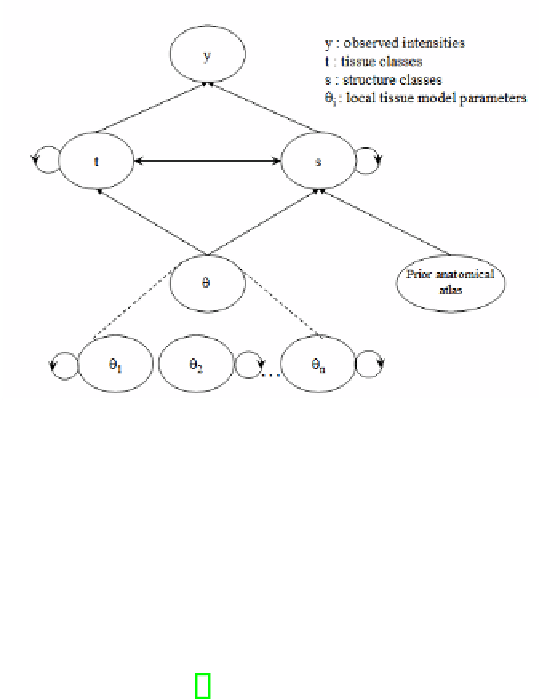Information Technology Reference
In-Depth Information
Fig. 2.
Graphical model illustrating the joint dependencies between local intensity
models, and tissue and structure segmentations
design reliable systems able to recover from agents with low performance and
wrong knowledge, to focus spatially and semantically on relevant knowledge, to
cooperate and share tasks between agents in various domains, and to reduce
computation time through distributed and asynchronous implementation.
Previous work has shown the potential of multi-agent approaches for MRI
segmentation along two main directions: first of all as a way to cope with grey
level heterogeneity and bias field effects, by enabling the development of local
and situated processing styles [8] and secondly, as a way to support the coop-
erations between various processing styles and information types, namely tissue
and structure information [9], [10]. Stated differently, multi-agent modeling may
be seen as a robust approach to identify the main lines along which to distribute
complex processing issues, and support the design of situated cooperative sys-
tems at the symbolic level as illustrated in Figure 1. A designing approach has
been furthermore proposed [10] to benefit from both Markov-centered and agent-
based modeling toward robust MRI processing systems. In the course of this
work, however, we pointed out the gap existing between the symbolical level
of the agent-based cooperations and the numerical level of Markov optimiza-
tion, this gap resulting in a diculty to ground formally the proposed design.
In particular the mutual dependencies between the Markov variables (tissue and
structure segmentations on one hand, local intensity models on the other hand)
were handled through rather
ad hoc
cooperation mechanisms.
The point here is then to start from the observation that Markov graphi-
cal modeling may be used to visualize the dependencies between local inten-
sity models, and tissue and structure segmentations, as shown in Figure 2.
According to this Figure, the observed intensities
y
are seen as reflecting both
tissue-dependent and structure dependent information. Tissues and structures
are considered as mutually dependent, since structures are composed of tissues.




Search WWH ::

Custom Search